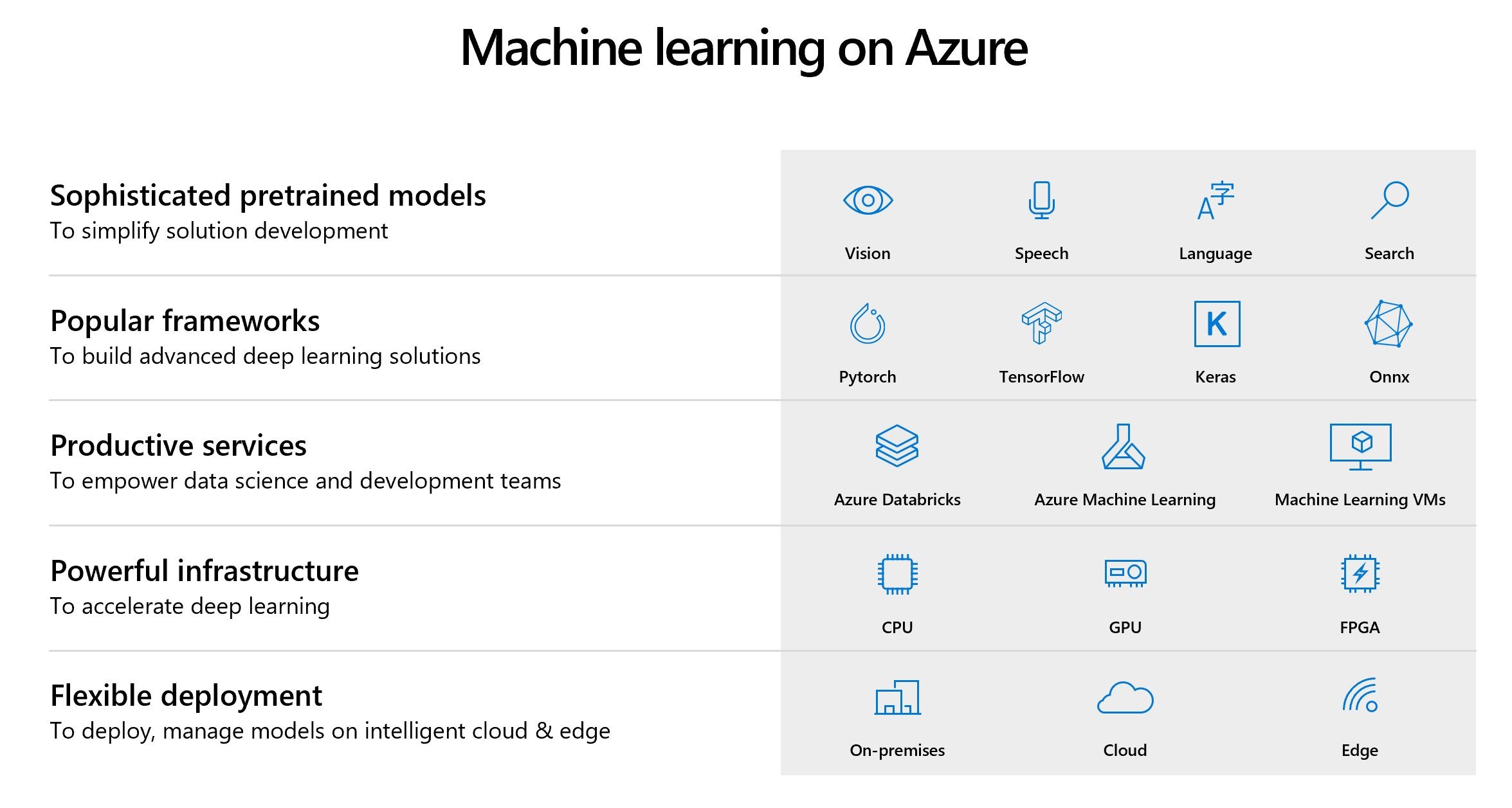What is Azure Artificial Intelligence?
Azure Artificial Intelligence (AI) is a collection of services and tools provided by Microsoft’s Azure platform, designed to help organizations build, deploy, and manage intelligent applications and solutions. Components of Azure AI include machine learning, knowledge mining, and cognitive services, which can be seamlessly integrated into the broader Azure ecosystem. The benefits of using Azure AI include scalability, enhanced security, and ease of integration with existing systems and workflows.
Core Capabilities of Azure AI
Azure Artificial Intelligence offers a wide range of capabilities, with machine learning, knowledge mining, and cognitive services forming the backbone of its offerings. These components enable organizations to build and implement intelligent solutions tailored to their specific needs.
Machine Learning: Azure Machine Learning (Azure ML) is a cloud-based service that allows developers and data scientists to build, train, and deploy machine learning models. With Azure ML, users can create custom models using pre-built algorithms, pre-trained models, or their own code. This flexibility makes it an ideal choice for organizations looking to leverage machine learning in their operations.
Real-world applications of Azure ML include predictive maintenance, demand forecasting, and fraud detection. For instance, a manufacturing company can use Azure ML to predict equipment failures, reducing downtime and increasing efficiency. Similarly, a retail business can use Azure ML to forecast demand, ensuring optimal inventory levels and improving customer satisfaction.
Knowledge Mining: Azure Knowledge Mining is designed to extract valuable insights from unstructured data, such as text documents, images, and videos. By leveraging cognitive search, text analytics, and other knowledge mining tools, organizations can analyze and understand data in new ways, leading to better decision-making and more informed business strategies.
For example, a healthcare provider can use Azure Knowledge Mining to analyze patient records, identifying patterns and trends that can help improve patient outcomes. A media company can use Azure Knowledge Mining to analyze customer feedback, gaining insights into audience preferences and tailoring content accordingly.
Cognitive Services: Azure Cognitive Services enable developers to add intelligence to applications, websites, and bots. These services include computer vision, natural language processing, and decision-making tools, allowing organizations to build innovative solutions that cater to their unique requirements.
Examples of Azure Cognitive Services applications include content moderation, sentiment analysis, and language translation. A social media platform can use Azure Cognitive Services to moderate user-generated content, ensuring a safe and respectful environment. A customer support system can use Azure Cognitive Services to analyze customer feedback, identifying sentiment and providing tailored responses.
How to Get Started with Azure AI
To begin using Azure Artificial Intelligence, follow these steps:
- Create an Azure account: Sign up for a free Azure account if you don’t already have one. This will grant you access to Azure services, including AI tools.
- Choose the right subscription: Azure offers various subscription plans tailored to different needs and budgets. Select the one that best fits your organization’s requirements.
- Access AI services: Navigate to the Azure portal and explore the available AI services. Familiarize yourself with the user interface and take note of the various features and tools.
To help users get started, Microsoft provides extensive documentation, tutorials, and resources. The Azure AI Services documentation is an excellent starting point for learning about Azure AI and its capabilities. Additionally, the Azure AI Learning Paths offer comprehensive guides for developers, data scientists, and IT professionals looking to master Azure AI.
Azure Machine Learning: Unlocking the Potential of Data
Azure Machine Learning (Azure ML) is a cloud-based service that enables developers and data scientists to build, train, and deploy machine learning models. With Azure ML, users can create custom models using pre-built algorithms, pre-trained models, or their own code. This flexibility makes it an ideal choice for organizations looking to leverage machine learning in their operations.
Building a machine learning model with Azure ML involves several steps:
- Data preparation: Prepare and clean your data, ensuring it is in the correct format and free from errors or inconsistencies.
- Model selection: Choose a machine learning algorithm that best suits your data and desired outcome.
- Training: Train the model using your data, allowing it to learn patterns and relationships.
- Evaluation: Evaluate the model’s performance and make adjustments as needed.
- Deployment: Deploy the model to a production environment, where it can be used to make predictions or inform decision-making processes.
Examples of successful Azure ML implementations include:
- Predictive maintenance: A manufacturing company uses Azure ML to predict equipment failures, reducing downtime and increasing efficiency.
- Demand forecasting: A retail business uses Azure ML to forecast demand, ensuring optimal inventory levels and improving customer satisfaction.
- Fraud detection: A financial institution uses Azure ML to detect fraudulent transactions, enhancing security and reducing losses.
Knowledge Mining: Extracting Insights from Unstructured Data
Azure Knowledge Mining is a powerful tool that enables organizations to extract valuable insights from unstructured data, such as text documents, images, and videos. By leveraging cognitive search, text analytics, and other knowledge mining tools, organizations can analyze and understand data in new ways, leading to better decision-making and more informed business strategies.
Cognitive search is a key component of Azure Knowledge Mining. It uses artificial intelligence to enhance the search experience, delivering more relevant and personalized results. By understanding the context and intent of search queries, cognitive search can help users find the information they need more quickly and easily.
Text analytics is another essential tool in the knowledge mining arsenal. It enables organizations to extract meaning and insights from text data, using natural language processing techniques to analyze sentiment, key phrases, and entities. By understanding the content and context of text data, organizations can uncover trends, patterns, and relationships that might otherwise go unnoticed.
Examples of Azure Knowledge Mining applications include:
- Customer feedback analysis: A company uses Azure Knowledge Mining to analyze customer feedback, gaining insights into customer satisfaction, preferences, and pain points.
- Patent analysis: A legal firm uses Azure Knowledge Mining to analyze patent documents, identifying trends and relationships that can inform strategic decisions.
- Medical research: A research organization uses Azure Knowledge Mining to analyze medical literature, uncovering new insights and connections that can advance scientific understanding.
Cognitive Services: Enhancing Applications with Azure AI
Azure Cognitive Services are a collection of artificial intelligence tools that can be used to add intelligence to applications, websites, and bots. These services are designed to make it easy for developers to incorporate AI capabilities into their projects, without requiring extensive knowledge of machine learning or data science. By using pre-built models and APIs, developers can quickly and easily add features such as computer vision, natural language processing, and decision-making tools to their applications.
Examples of Azure Cognitive Services include:
- Computer Vision: This service enables developers to build applications that can analyze and understand images and videos. By using computer vision, developers can create applications that can recognize objects, identify scenes, and even understand the content of text within images.
- Natural Language Processing: This service enables developers to build applications that can understand and interpret human language. By using natural language processing, developers can create applications that can analyze text, extract meaning, and even respond to user queries in a conversational manner.
- Decision: This service enables developers to build applications that can make informed decisions based on data and context. By using decision-making tools, developers can create applications that can predict outcomes, recommend actions, and even automate decision-making processes.
Examples of real-world applications for Azure Cognitive Services include:
- Customer support: A company uses Azure Cognitive Services to build a chatbot that can understand and respond to customer queries, improving the customer experience and reducing the workload on human support staff.
- Content moderation: A social media platform uses Azure Cognitive Services to moderate user-generated content, ensuring that it meets community standards and is free from harmful or offensive material.
- Product recommendations: An e-commerce website uses Azure Cognitive Services to analyze user behavior and recommend products, improving the customer experience and increasing sales.
Best Practices for Azure AI Implementation
Implementing Azure AI in your projects and organizations can be a powerful way to unlock new insights, automate processes, and drive innovation. However, it’s important to follow best practices to ensure that your Azure AI implementation is successful. Here are some best practices to keep in mind:
1. Prepare your data
Data preparation is a critical step in any Azure AI implementation. Before building and training your models, it’s important to clean, preprocess, and transform your data to ensure that it’s in the right format and free from errors or inconsistencies. This can help improve the accuracy and performance of your models.
2. Choose the right model
Azure AI offers a wide range of machine learning models, each with its own strengths and weaknesses. It’s important to choose the right model for your specific use case, taking into account factors such as the size and complexity of your data, the type of problem you’re trying to solve, and the level of accuracy you need.
3. Monitor your models
Once you’ve deployed your Azure AI models, it’s important to monitor their performance over time. This can help you identify any issues or anomalies, and make adjustments as needed to ensure that your models continue to perform optimally.
4. Test, iterate, and refine
Azure AI is an iterative process. It’s important to test your models thoroughly, gather feedback, and make improvements as needed. This can help you refine your models over time, improving their accuracy and performance.
5. Ensure security and compliance
Security and compliance are critical considerations in any Azure AI implementation. It’s important to ensure that your Azure AI models are secure, and that they comply with any relevant regulations or industry standards.
6. Leverage Azure resources and documentation
Azure offers a wide range of resources and documentation to help users get started with Azure AI. This can include tutorials, sample code, and best practices guides. Leveraging these resources can help you get up to speed quickly, and ensure that you’re making the most of Azure AI’s capabilities.
Azure AI: The Future of Intelligent Solutions
Azure Artificial Intelligence is poised to have a significant impact on various industries, transforming the way businesses operate and deliver value to their customers. With its powerful capabilities and ease of integration, Azure AI is becoming an essential tool for organizations looking to stay competitive in an increasingly data-driven world.
Recent advancements in Azure AI include the introduction of new cognitive services, such as the Conversational Language Understanding tool, which enables developers to build more natural and intuitive conversational interfaces. Additionally, Azure Machine Learning has seen improvements in its automation capabilities, making it easier for users to build, train, and deploy machine learning models at scale.
The future of Azure AI promises even more exciting developments. With a focus on innovation and continuous improvement, Microsoft is investing in research and development to advance the capabilities of Azure AI. Upcoming features may include advanced natural language processing tools, more sophisticated decision-making algorithms, and improved integration with other Azure services.
In conclusion, Azure Artificial Intelligence is a powerful tool that can help organizations unlock new insights, automate processes, and drive innovation. By following best practices for implementation and leveraging the latest advancements in Azure AI, businesses can stay ahead of the curve and deliver intelligent solutions that meet the needs of their customers.






